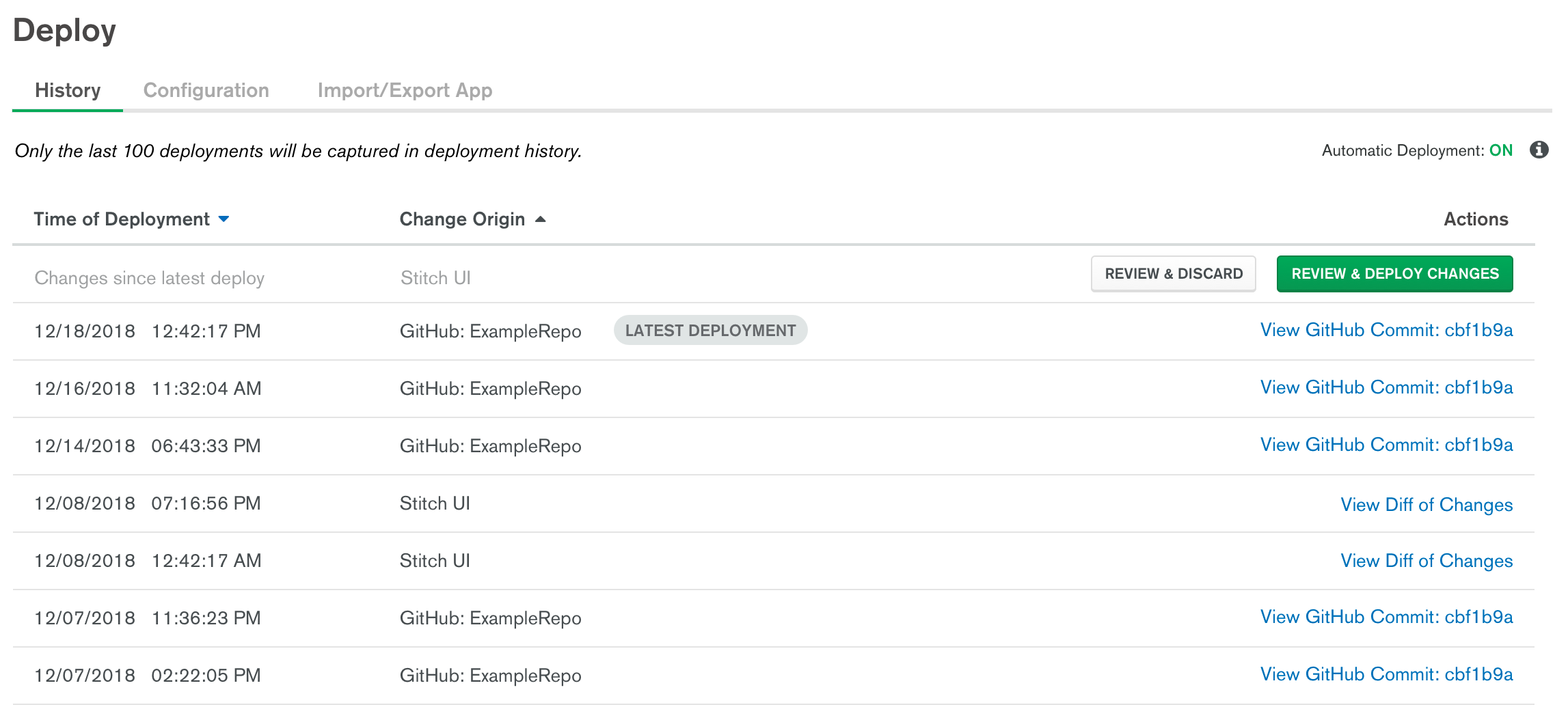- Stitch >
- Application Deployment
Application Deployment¶
On this page
Introduction¶
Stitch uses a deployment-based versioning scheme that allows you to group updates to your application and make them available to client applications at the same time. You can deploy a new version of your application with multiple deployment methods that each fit a particular development workflow. You can also review the historical state of your application based on the built-in deployment history log.
Concepts¶
Deployment Methods¶
You can deploy new versions of your application through the Stitch UI or one of multiple code-based deployment methods that each suit a particular development workflow.
| Deployment Method | Details |
|---|---|
| Stitch UI | Use This Method If
Deployment Pattern For a detailed walkthrough, see Deploy from the Stitch UI
|
| Automatic GitHub Deployment | Use This Method If
Deployment Pattern For a detailed walkthrough, see Deploy Automatically with GitHub
|
| Stitch CLI | Use This Method If
Deployment Pattern For a detailed walkthrough, see Deploy Changes with Stitch CLI
|
| Stitch Admin API | Use This Method If
Deployment Pattern For a detailed walkthrough, see Draft and Deploy a Group of Changes
|
Application Components¶
Stitch applications are composed of components like Functions, Triggers, Auth Providers, Services, and Values. A deployment consist of at least one new, updated, or deleted component.
Configuration Files¶
Stitch uses configuration files to define your application’s metadata and components. Every component is defined by its own configuration file and each type of component uses a distinct configuration file schema. The Stitch UI manages your application’s configuration files for you, but you can also use a code-based deployment method to update your application by adding, modifying, and deleting configuration files directly.
Application Directory¶
Stitch applications are structured in a nested directory format called an application directory that contains configuration files for your application components. The configuration files are grouped into directories based on their component type. You can download a copy of the application directory for the most recently deployed version of an app by exporting it from the Stitch UI or Stitch CLI; or by cloning the underlying Git repository.
For additional information on the structure of an application directory as well as the schema of each configuration file type, see Application Configuration Files.
Deployment History¶
Stitch logs every deployment of an application and exposes a list of the 100 most recent deployments in the History tab of the Deploy in the Stitch UI. Each deployment log includes data about a set of changes, such as their status, origin, and time of deployment.
If you choose to deploy through the Stitch UI, any changes you make are grouped in a row at the top of the deployment history table that represents draft changes made since the previous deployment. You can use the Action buttons on this row to manually deploy all draft changes.
